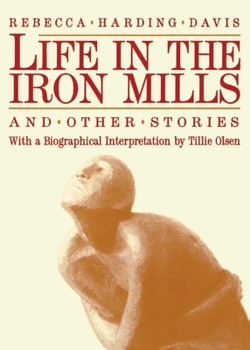Life in the Iron Mills and Other Stories: Second Edition
Select Format
Select Condition 
Book Overview
Originally published in 1861 in the Atlantic Monthly , "Life in the Iron Mills" remains a classic of proletarian literature that paints a bleak and incisive portrait of nineteenth-century industrial... This description may be from another edition of this product.
Format:Paperback
Language:English
ISBN:0935312390
ISBN13:9780935312393
Release Date:January 1993
Publisher:Feminist Press
Length:248 Pages
Weight:0.57 lbs.
Dimensions:0.8" x 5.0" x 7.0"
Customer Reviews
1 rating
vivid tale of 1860's Welsh ironworkers in WVA mills
Published by Thriftbooks.com User , 20 years ago
I read Life in the Iron Mills for a graduate English course on social-class-imagery in 18th & 19th cen Transatlantic (British and American) literature with Elisabeth Ceppi at Portland State. Ceppi asked us to read closely for the rhetoric of class attributes. There was much class-identifying-imagery to observe in Harding-Davis' 1860's rendering of the lives of impoverished Welsh miners transported into late-slave-era iron foundries of the American North. Mid-19th-cen feminist literature of this social-reform type is deeply informed by Protestant missionary enthusiasm to transform everyone into clean-living bourgeois church-goers. Thus Harding-Davis uses powerful polarities of dirt for workers, clean for bouregoisie, etc. It's so blunt and obvious that she could be accused of writing soap-opera ... as many of her mid-1800's female-writer colleagues were accused, sometimes justly. However her scenes of poverty, disease, and death in the mills are so heart-wrenching that her motives are clearly pure. Now that Tillie Olsen has rescued Harding-Davis' wonderful writing from obscurity, she is good to read for knowledge of American feminist writing history, for understanding of American class polarities in the ante-bellum era, and also for a true, scary story of life with the great unwashed.





